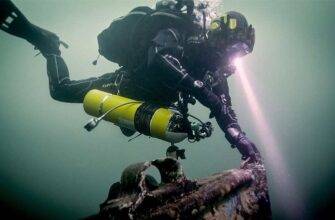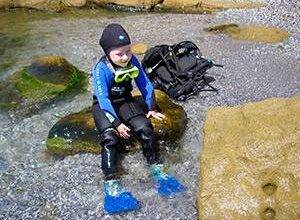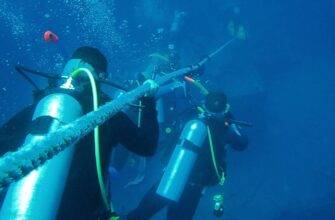Purpose – Cylinder valve turns on and off the air supply from the cylinder.
Types. There are two types of valves:
K-valve – a simple opening/closing valve and
T-valve, which has a built-in warning mechanism.
When the pressure in the cylinder drops below a critical value, the spring can no longer be held by the pressure and closes the valve, thereby increasing breathing resistance. This serves as a signal that the air pressure in the cylinder is low.
In this case, you must lower the lever on the valve to manually restore normal air supply.
The lever should be in the up position at the start of the dive and down when breathing becomes difficult. Do not rely on the T-valve as the only warning of low cylinder air pressure, as the lever can be accidentally left in the down position at the beginning of a dive or accidentally turned down during a dive.
The valve outlet is always fitted with a rubber O-ring to seal the contact between the cylinder and regulator when the regulator and cylinder are connected to each other.
Features
A safety device necessary for any valve is a safety disc. It eliminates overpressure in the cylinder, which can occur as a result of overfilling the cylinder or placing it in conditions of excessively high temperature. If pressure too high, the safety disk opens the air and prevents a dangerous situation.
Almost all modern scuba cylinder valves are made of chrome plated brass. Usually the cylinder you choose comes set with the valve installed. No preparatory steps are required.
Read More:




